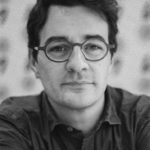Link to Pubmed [PMID] – 31931081
Link to DOI – S0190-9622(20)30043-810.1016/j.jaad.2019.12.064
J. Am. Acad. Dermatol. 2020 Aug; 83(2): 455-462
Deep cutaneous fungal infections (DCFIs) are varied in immunosuppressed patients, with few data for such infections in solid-organ transplant recipients (s-OTRs).To determine DCFI diagnostic characteristics and outcome with treatments in s-OTRs.A 20-year retrospective observational study in France was conducted in 8 primary dermatology-dedicated centers for s-OTRs diagnosed with DCFIs. Relevant clinical data on transplants, fungal species, treatments, and outcomes were analyzed.Overall, 46 s-OTRs developed DCFIs (median delay, 13 months after transplant) with predominant phaeohyphomycoses (46%). Distribution of nodular lesions on limbs and granulomatous findings on histopathology were helpful diagnostic clues. Treatments received were systemic antifungal therapies (48%), systemic antifungal therapies combined with surgery (28%), surgery alone (15%), and modulation of immunosuppression (61%), leading to complete response in 63% of s-OTRs.Due to the retrospective observational design of the study.Phaeohyphomycoses are the most common DCFIs in s-OTRs. Multidisciplinary teams are helpful for optimal diagnosis and management.
